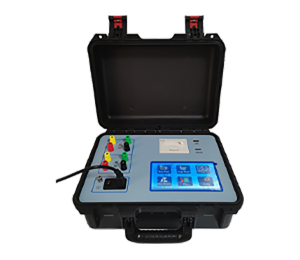 English
English


Understanding and Analyzing Short Circuit Impedance in Electrical Systems
Understanding Short Circuit Impedance
Short circuit impedance is a crucial concept in electrical engineering, particularly in the analysis and design of electrical power systems. It refers to the total impedance of a circuit during a short circuit condition, which occurs when a low-resistance path allows significant current to flow. This situation is critical as it can lead to severe damage to electrical equipment and can pose safety risks. Understanding short circuit impedance is essential for engineers involved in power system planning, protective device selection, and system stability assessment.
The Basics of Impedance
Impedance, denoted by the symbol Z, is a measure of the opposition that a circuit presents to the flow of alternating current (AC). It encompasses both resistance (R) and reactance (X), the latter being due to inductors and capacitors in the circuit. The formula for impedance is typically expressed as
\[ Z = R + jX \]
where \( j \) is the imaginary unit. When analyzing short circuits, both the resistive and reactive components contribute to the overall impedance, impacting the magnitude of the current that flows during a fault.
Short Circuit Conditions
When a short circuit occurs, the impedance of the circuit drops significantly, often approaching zero. This decrease allows a large fault current, known as short circuit current, to flow through the system. The magnitude of this current depends on several factors, including the supply voltage and the short circuit impedance. Calculating the short circuit impedance is vital for predicting the fault current and designing appropriate protection systems.
In practical terms, short circuit impedance is influenced by various elements in the power system, including transformers, generators, transmission lines, and loads
. Each component contributes to the system's overall impedance and plays a role in limiting the fault current during a short circuit event.short circuit impedance

Importance in System Protection
The primary purpose of understanding short circuit impedance is to protect electrical equipment and maintain system stability. Protective devices, such as circuit breakers and fuses, are designed to detect abnormalities in current flow and disconnect the power supply during a fault. By accurately calculating short circuit impedance, engineers can select suitable protective devices that can handle the expected fault currents without compromising system integrity.
Moreover, short circuit impedance plays a role in relay settings. Protection relays are programmed based on expected fault currents, and if these settings are miscalculated, it can lead to nuisance tripping or, worse, equipment damage. Therefore, thorough analysis and understanding of short circuit impedance are paramount in the protective scheme of power systems.
Calculation Methods
Several methods exist for calculating short circuit impedance, including
1. Thevenin’s Theorem This approach simplifies the network to a single voltage source and impedance, making it easier to analyze short circuit conditions at specific points in the system. 2. Symmetrical Components This method involves breaking down phasors into symmetrical components, which help analyze unbalanced systems and predict behavior under fault conditions.
3. Computer Simulations Advanced software tools can simulate various fault scenarios, providing detailed insights into short circuit behavior and impedance.
Conclusion
In conclusion, short circuit impedance is a vital aspect of power system analysis that directly influences the design and implementation of protective measures in electrical networks. By accurately understanding and calculating short circuit impedance, engineers can ensure the safety, reliability, and efficiency of electrical systems. As power systems evolve with new technologies and greater complexity, continuous research and education in this field remain essential to address the challenges posed by short circuit conditions effectively.
-
Differences between open cup flash point tester and closed cup flash point testerNewsOct.31,2024
-
The Reliable Load Tap ChangerNewsOct.23,2024
-
The Essential Guide to Hipot TestersNewsOct.23,2024
-
The Digital Insulation TesterNewsOct.23,2024
-
The Best Earth Loop Impedance Tester for SaleNewsOct.23,2024
-
Tan Delta Tester--The Essential Tool for Electrical Insulation TestingNewsOct.23,2024





